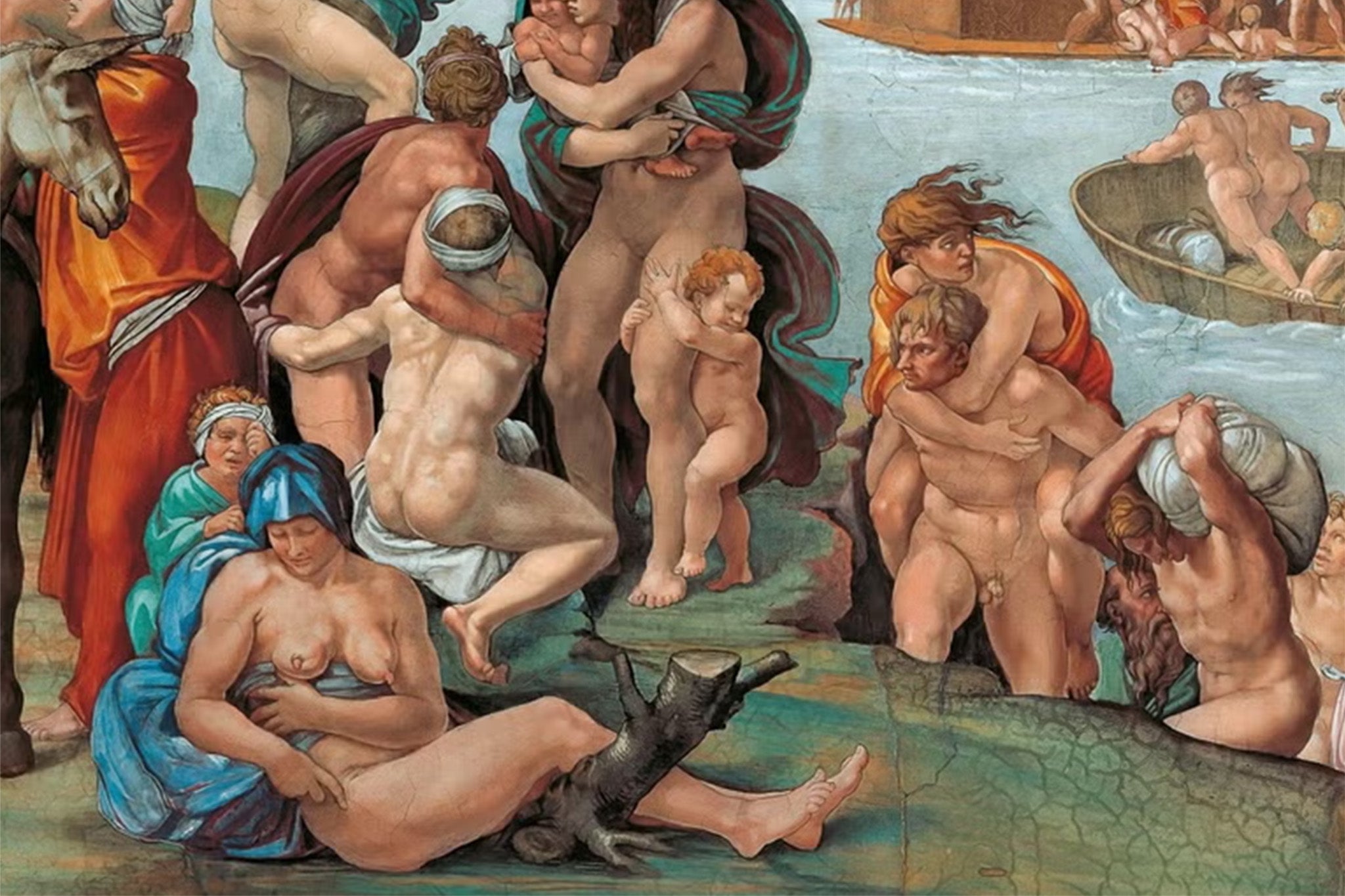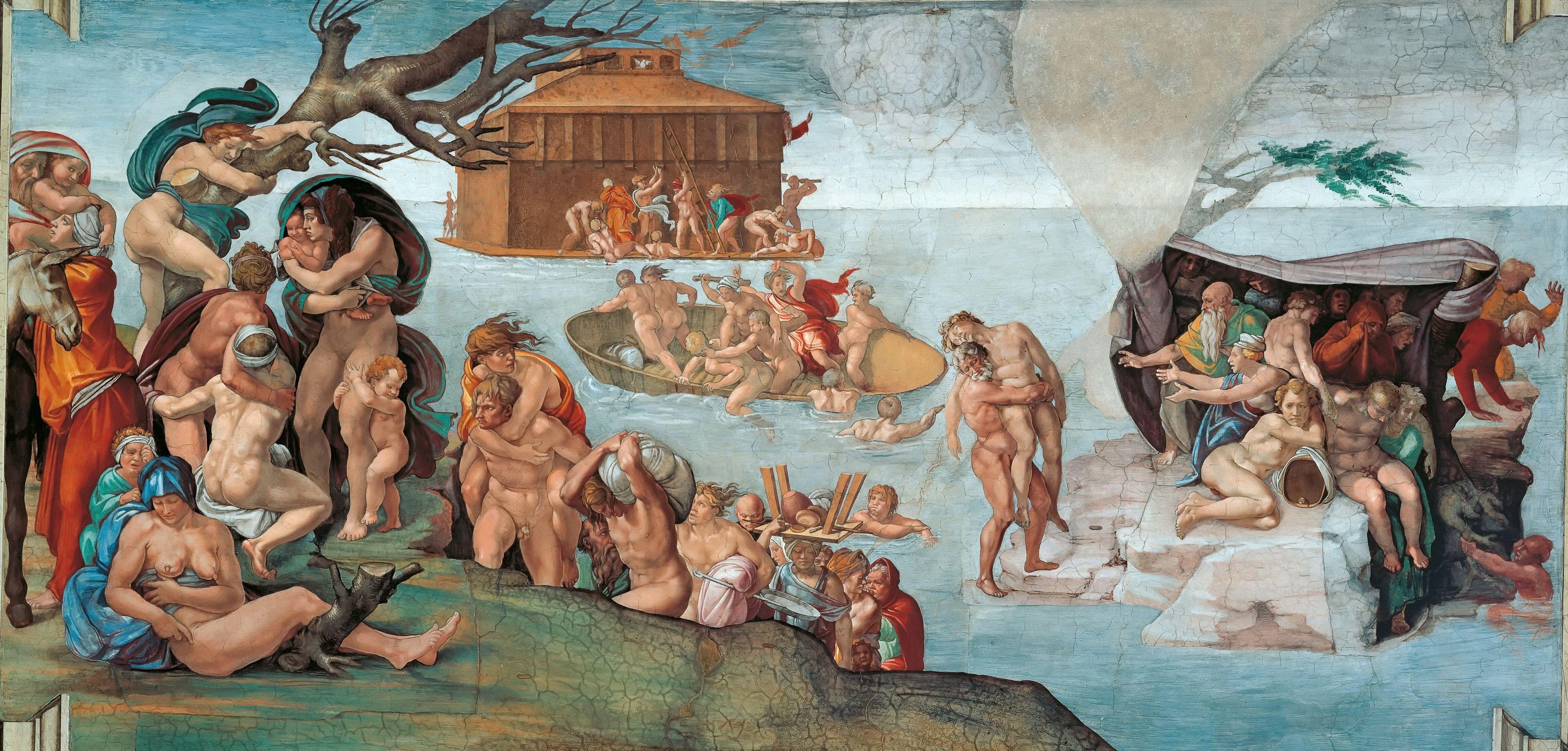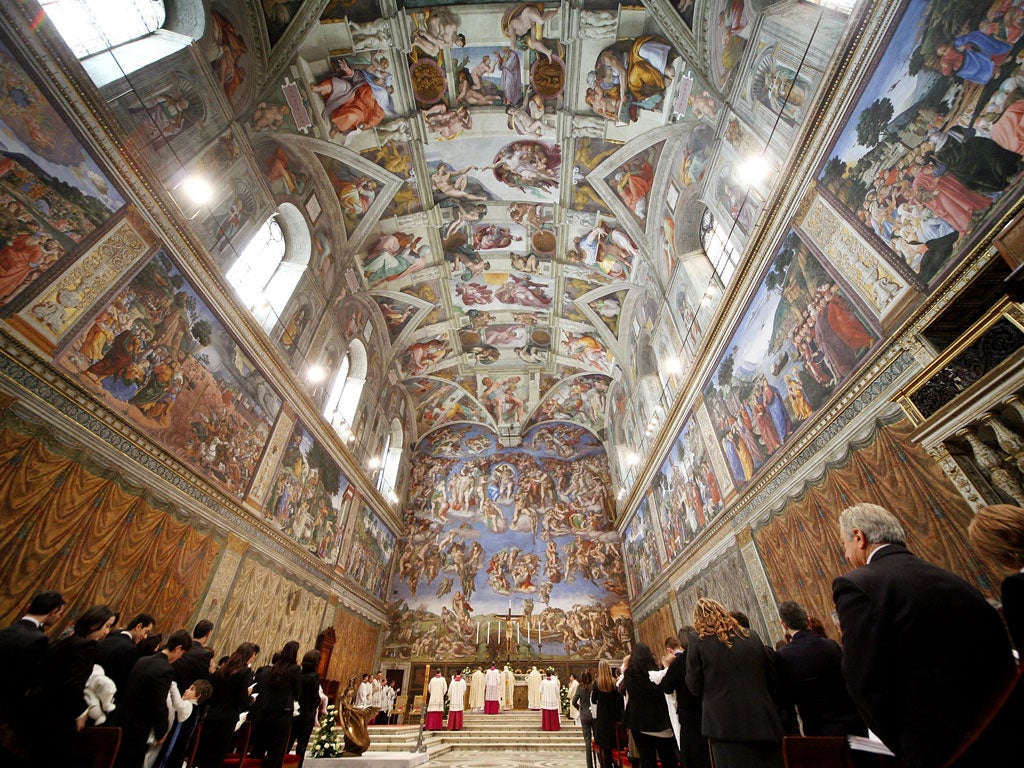Michelangelo’s iconic Sistine Chapel painting may depict woman with breast cancer
‘It tells us something interesting about Michelangelo’, a medical historian tells The Independent

Renaissance figure Michelangelo may have depicted a woman suffering from breast cancer in a famous fresco of a biblical flood on the ceiling of the Sistine Chapel, according to researchers.
The team of art-history and medical experts found that the Florentine sculptor and painter’s detailing of the woman’s right breast and area close to her right armpit was consistent with the disease.
The Flood, one of a series from the Book of Genesis covering the vault of the Vatican City landmark, depicts many doomed people fleeing a rising flood while others seek refuge on Noah’s Ark in the background.
The researchers, writing in journal The Breast earlier this month, conclude the artist’s hint of the disease aligned with the inevitability of death in the scene.
“The representation of a probable breast cancer is linked to the concept of the impermanence of life and has the significance of punishment,” the authors said.
The eight authors include Andreas Nerlich from Ludwig-Maximilians-University in Germany; Johann Dewaal from the Breast Centre in Dachau, Germany; and Raffaella Bianucci from Paris-Saclay University in France.

The woman, in the bottom-left corner of the scene, wears a blue headscarf, indicating she is married.
The researchers say that while her left breast shows signs of breastfeeding, the right has a “significantly retracted and deformed nipple” and a “slight bulge consistent with a lump”.
“Similarly, towards the left axilla [armpit], another slight bulge is seen, which could represent enlarged nodes,” they said.
Michelangelo was known for his interest in the human anatomy, which included the dissection of corpses to better inform his own artistic depictions.
“Michelangelo, who began assisting to autopsies when 17 years old, would have observed pathology potentially including [breast cancer},” the research authors said.
The practice of interpreting potential medical conditions in art is called iconodiagnosis, a discipline requiring collaboration betweem experts in biomedicine, medical history, and art history.

The research team said it formed the view of Michelangelo’s depiction after comparing breasts in his other paintings and sculptures.
“The result of our observation indicates that Michelangelo had knowledge of healthy breasts of different sizes and morphologies and adapted them to the biblical feminine personages,” the authors said.
Speaking to The Independent, University of Edinburgh medical historian Dr Agnes Arnold-Forster said studies such as this were useful as they provided an historical insight into what non-medical people knew about particular diseases.
“It tells us something interesting about Michelangelo,” Dr Arnold-Foster said. “Did he know that it was breast cancer that he was painting? Was it a deliberate choice that has some kind of iconography? Was he trying to make a point?”
She said that, from an historical perspective, the study didn’t reveal more than what was already known.
“We already know a lot about cancer in early modern Europe,” she said, adding many people mistakenly believed it was a 20th century disease when it was in fact written about in texts from physicians from the time, and contained in early newspaper obituaries.
However, she said it wasn’t often seen in art from the time. “Generally speaking, Renaissance paintings of bodies are representing an idealised form. Even if you see an aberration in the body, you’re not necessarily going to paint it,” she said.
Join our commenting forum
Join thought-provoking conversations, follow other Independent readers and see their replies
Comments
Bookmark popover
Removed from bookmarks